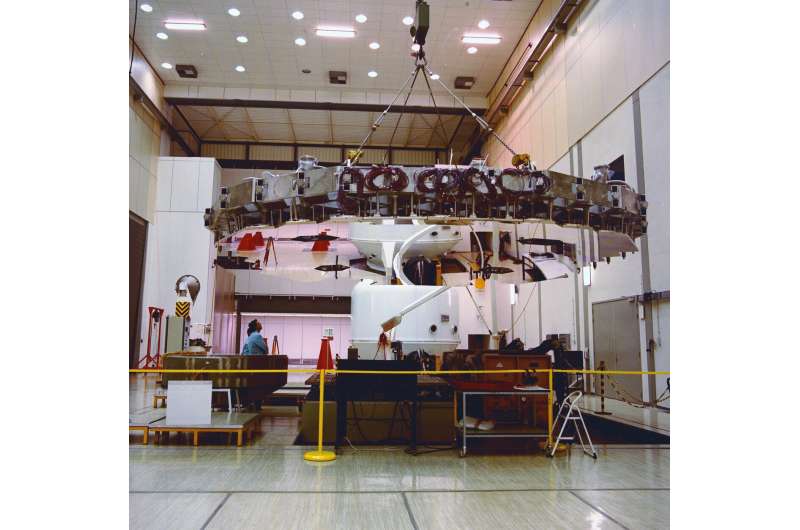Image: Mirror array for LSS

The giant 121-segment mirror array used to reflect simulated sunlight into the largest vacuum chamber in Europe seen being hoisted into position within ESA's technical heart back in 1986.
This mirror array remains an integral element of ESA's Large Space Simulator at the ESTEC Test Centre in Noordwijk, the Netherlands. It is used to subject entire satellites to space-like conditions ahead of launch. At 15 m high and 10 m in diameter, the chamber is cavernous enough to accommodate an upended double decker bus.
Satellites are lowered down through a topside hatch. Once the top and side hatches are sealed, high-performance pumps create a vacuum a billion times lower than standard sea level atmosphere, held for weeks at a time during test runs.
This mirror array is made of 121 separate hexagonal segments. Its task is to reflect a 6-m diameter beam of simulated sunlight into the chamber, at the same time as the walls are pumped full of –190°C liquid nitrogen, together recreating the extreme thermal conditions prevailing in orbit.
By re-orienting the individual segments a much tighter beam can be focused, helping to simulate higher intensity sunlight, such as the 10 solar constants experienced in the vicinity of Sun-scorched Mercury, for testing the ESA/JAXA BepiColombo mission.
The LSS has tested dozens of space missions over the years, including many of ESA's largest: as well as BepiColombo, the 8-tonne Envisat and the 20-tonne Automated Transfer Vehicle.
Provided by European Space Agency





















